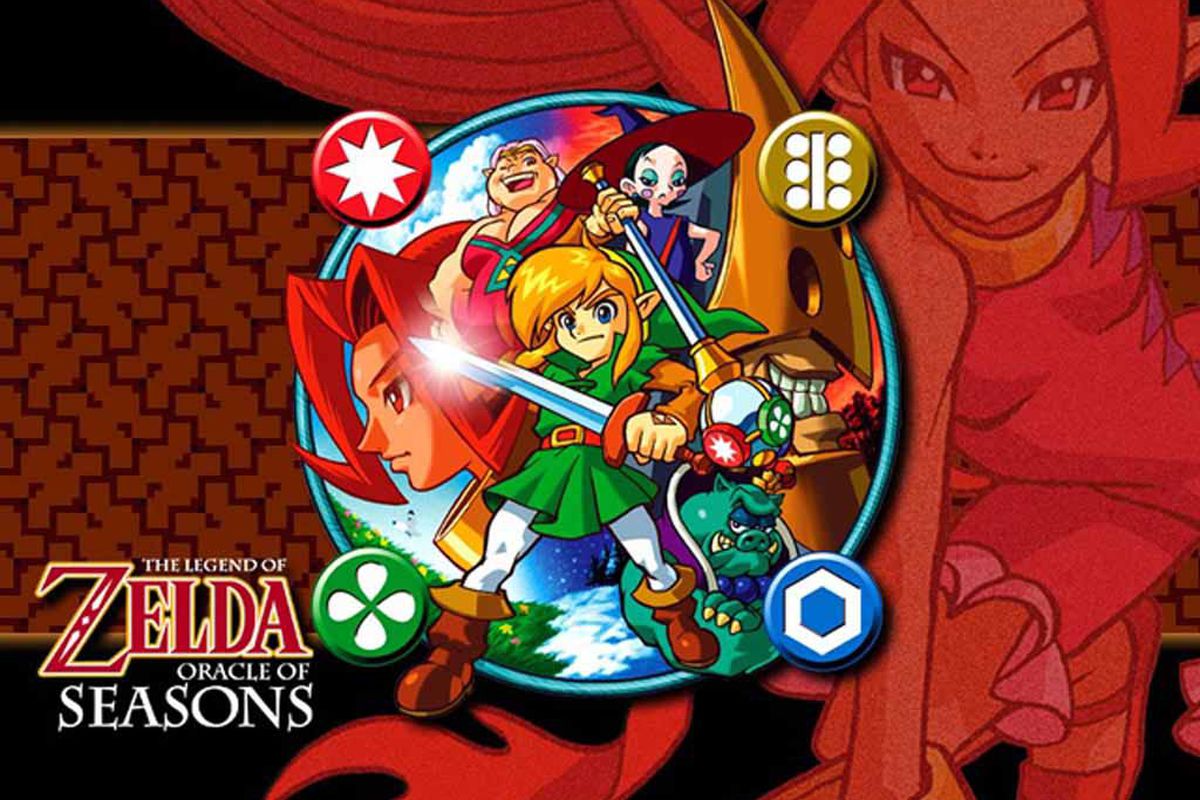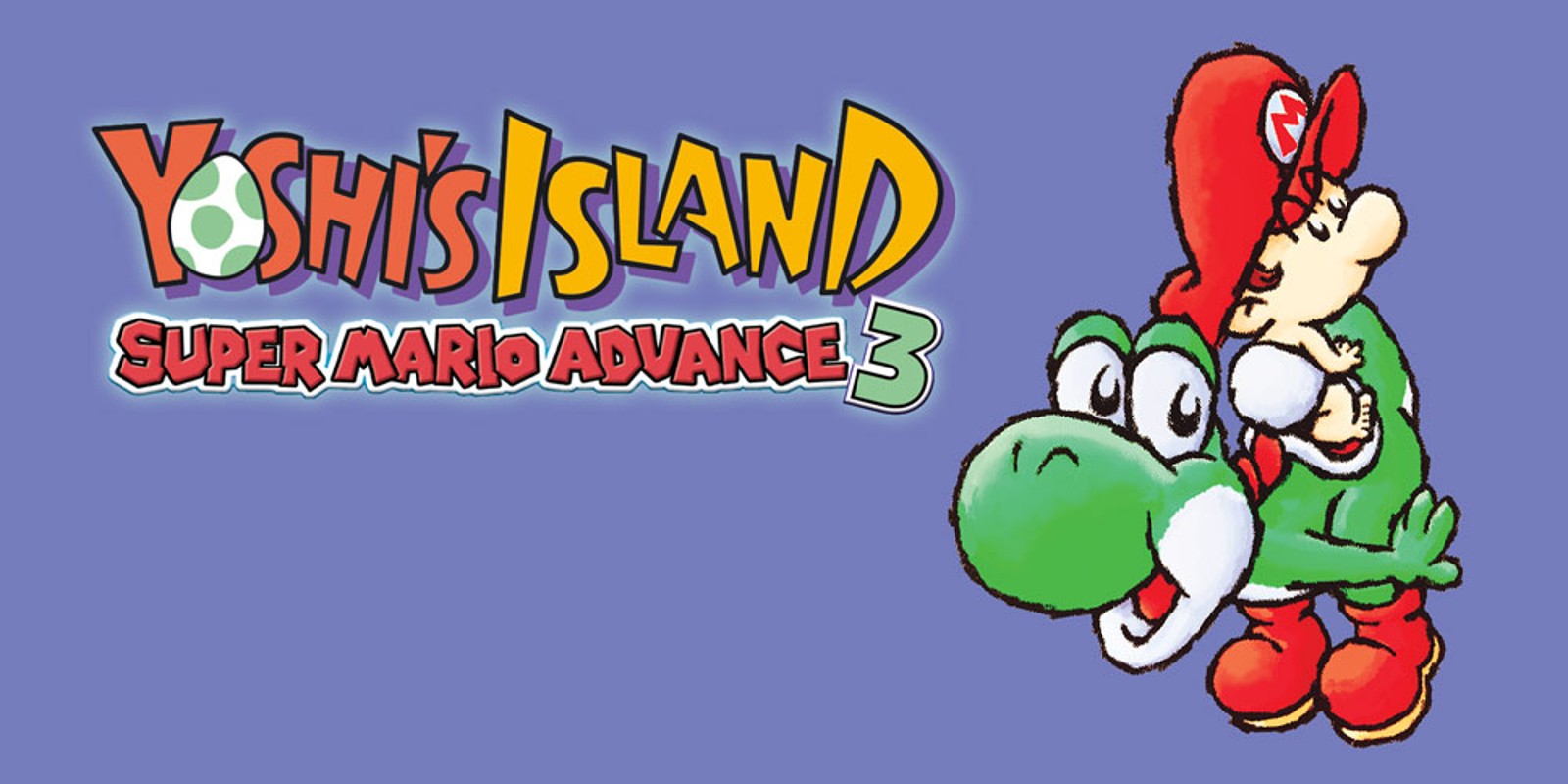Played on 3DS Virtual Console
Following the success of two of the most celebrated entries in the Legend of Zelda series, Ocarina of Time and Majora’s Mask, Nintendo quickly came out with the next two titles in the series: Oracle of Seasons and Oracle of Ages. This almost felt like a step back for the series, given how ambitious the two Nintendo 64 titles were, but it’s important to remember that these two games were released on the GameBoy Color, which had very limited hardware capabilities. So, these games actually were pretty ambitious for that handheld, but I don’t think that exempts them from scrutiny. Although Oracle of Seasons and Oracle of Ages are separate games, they were released at the same time, and so they are linked, much in the same way that many of the Pokemon games are released. The two games are apparently meant to be played one after the other (although it doesn’t matter which one you play first), and then they’re supposed to be linked with a password so that you can play one final linked section. I’ll say up front that, as of the time of writing this review, I have only played Oracle of Seasons. I plan on playing Oracle of Ages at some point, but as of right now I can’t speak to the linked experience of the games. As such, this will only be a review of Oracle of Seasons as a standalone experience.
Oracle of Seasons sees Link in the land of Holodrum. The villain this time around is named Onox, who winds up capturing Din, the Oracle of Seasons. This throws the seasons into disarray within Holodrum. To save Din and defeat Onox, Link must collect the eight Essences of Nature, which are located in eight different dungeons throughout Holodrum. Around this point, the stories in a lot of the Zelda games weren’t fully fleshed out, so this is a pretty bare-bones plot that’s mainly just there to set up the gameplay. I’m not criticizing the game for this though. It’s just a product of the time, and so I only mention it to those of you that may have played a newer Zelda game and were hoping for a richer story. You won’t find it here.
The gameplay in Oracle of Seasons is also pretty cookie-cutter for the series. It most heavily follows the format of Link’s Awakening (which I think is a slightly better game, so play that over this if you haven’t already), the Zelda GameBoy game that came before this. I’ll offer a brief explanation for any newcomers, but I don’t really think it’s necessary to go too in-depth since it’s not that original, and I doubt many people will play this game as their first Zelda game. Anyway, basically you explore the overworld from a top-down perspective. While there are other things you do throughout the overworld, your primary goal is to find the next dungeon. In these dungeons, you’ll find a handy new item, fight a mini-boss, and then fight the main dungeon boss before getting the dungeon’s Essence of Nature. Link can then use any new items or abilities he’s gotten to open up new areas of the world and do other new things. It’s pretty standard for a Zelda game, so if you’ve played one before you won’t be too lost here.
The main “gimmick” that’s original to Oracle of Seasons is the functionality of the seasons. In a similar vein to how you had to manipulate time in Ocarina of Time or Majora’s Mask, in Oracle of Seasons you manipulate the seasons, unsurprisingly. While it’s not my favorite Zelda gimmick, I find that it’s the thing that helps this game stand out the most. Basically, every screen on the overworld will look different depending on what season it is, and so some will allow you to pass by easier than others. You don’t gain control over every season right away, so you won’t be able to do everything at the start of the game, but over time you can change things up enough so that you can do things differently. It didn’t necessarily add a ton to the game for me, but it was cool enough that it helped it stand out.
The other main additions are that Link can collect rings in this game. When equipped, they affect his stats differently. This is most similar to wearing the masks in Majora’s Mask, but for some reason it just wasn’t as satisfying here. Most of the effects are just kind of standard, and so if I’m being honest I didn’t even really bother with this system that much. It doesn’t have much of an effect on the game.
While it’s hard to be impressed by the graphics of a GameBoy Color game nowadays, I will say that Oracle of Seasons looks better than I remember a lot of games on the system looking. I’m not going to say it looks amazing or anything, but everything is at least visually appealing. The music does leave a little to be desired though. As I’m writing this, I honestly can’t remember any particular tune in Oracle of Seasons, whereas all you need to do is say the words “Gerudo Valley” to me and I’ll recall the memorable tune from Ocarina of Time. I don’t think the music here is bad or anything, it’s just not quite the same level of quality as I’d hope for.
I think it goes without saying, but if you come off of playing one of the console Zeldas before playing Oracle of Seasons like I did, just don’t expect it to be nearly as long of a game. This is a GameBoy Color game, so I wasn’t expecting it to be very long, but it winded up taking me about 14 hours to beat. To be honest, I’m perfectly fine with a game like this being that length, as I would have felt like going past that would have dragged on too much. I love the length of the longer console games, but for this it was better off being a smaller experience. There actually isn’t really a ton of sidequests in this game, and even some of the normal sidequests like collecting heart pieces wind up not taking as long (there are only 12 to collect in this game). So, you really do spend most of your time playing through the main game.
I might sound slightly negative here, but in the end I did still enjoy Oracle of Seasons. I think the best way to explain this is the moment I realized how I really felt about the game. I was telling somebody that I’ve been playing the game, and they asked me how it was. I thought about it for a moment, and then just replied “I mean…it’s Zelda.” And that’s really all it is. Zelda games have a pretty assured level of quality usually, and so Oracle of Seasons follows the Zelda formula just fine and ends up producing a pretty decent adventure as a result. However, because the Zelda series has such a high level of quality, many people have come to expect more and more each time. The series has had a history of continuing to innovate with each new entry, and Oracle of Seasons just doesn’t really do that. After the Nintendo 64 games revolutionized the series, it was just hard to take a step back and play a Zelda game that’s just doing the bare minimum.
So, with that, here’s where my final recommendations come in. I’ll try to address as many types of audiences as possible. If you’ve never played a Zelda game, don’t start here. Play a different game in the series, either one of the 3D ones or one of the earlier entries in the series (A Link to the Past will always be my personal favorite). If you have played Zelda games before and hated them, then Oracle of Seasons isn’t likely going to convert you. If you’re only trying to play the absolute best games in the series, then skip this one. There are definitely many other games that I would recommend over this, as it’s probably one of my least favorite entries in the series. If you’re a casual fan of the series, this one isn’t one of the required ones. However, if you are a diehard Zelda fan and haven’t played Oracle of Seasons, then go for it. I stand by the fact that there is still a lot of enjoyment to be had with the game. The only problem ends up being that it doesn’t stand out as well as some of the other games in the series. Otherwise, it’s still a Zelda game, and so in the end it winds up being pretty good.
3.5/5




518727 900897Wow, awesome blog structure! How long have you been running a blog for? you made blogging appear easy. The total look of your site is great, let alone the content material material! 174266
481723 236962Im not that much of a internet reader to be honest but your blogs genuinely good, keep it up! Ill go ahead and bookmark your website to come back inside the future. All the greatest 386597
715619 696038Id require to verify with you here. Which is not one thing I usually do! I take pleasure in reading a submit that will make individuals believe. Furthermore, thanks for permitting me to remark! 71586
937992 53030magnificent post, really informative. I wonder why the other specialists of this sector do not notice this. You should continue your writing. Im certain, youve a fantastic readers base already! 129696
439311 377991wohh precisely what I was seeking for, thankyou for putting up. 162276
515281 542477I was suggested this blog by way of my cousin. Im no longer confident whether or not this put up is written by him as nobody else realize such detailed about my trouble. You are wonderful! Thanks! 757478
504223 372263Billiard is really a game which is mostly played by the high class folks 829762
774810 528390I likewise conceive so , perfectly written post! . 560343
841901 747899Im glad to become a visitor in this pure internet site, regards for this rare info! 324014
57196 359154Thank you for writing this tremendous top quality write-up. The details in this material confirms my point of view and you truly laid it out nicely. I could never have written an article this good. 243831
707364 229611i adore action movies and my idol is none other than Gerard Butler. this guy actually rocks 751502
666091 315127Hey there! Fantastic post! Please do tell us when we shall see a follow up! 406086
949859 267967Wholesale Inexpensive Handbags Will you be ok merely repost this on my internet site? Ive to allow credit where it can be due. Have got an excellent day! 462926
784694 811526I will proper away grab your rss feed to remain up to date on any succeeding articles you might write 153496
Hiya, I’m really glad I’ve found this info. Nowadays bloggers publish only about gossips and web and this is really frustrating. A good blog with interesting content, that’s what I need. Thank you for keeping this site, I’ll be visiting it. Do you do newsletters? Can not find it.
587932 807037wohh precisely what I was looking for, thankyou for putting up. 211421
Hello, i feel that i noticed you visited my website thus i got here to “return the favor”.I am attempting to in finding issues to improve my website!I suppose its adequate to make use of some of your concepts!!
782089 477406Need to tow line this caravan together with van trailer home your entire family quickly get exposed to the issues along with reversing create tight placement. awnings 953727
6765 670662Just wanna remark on few general points, The site style is perfect, the topic matter is rattling good 15010
39169 775860Somebody necessarily support to make seriously articles I may possibly state. That could be the really initial time I frequented your web page and to this point? I surprised with the research you created to make this actual put up incredible. Fantastic task! 881235
493736 120559Thanks for the post. I like your writing style – Im trying to start a blog myself, I think I might read thru all your posts for some suggestions! Thanks once far more. 208741
888027 678841I agree with your points , wonderful post. 374466
157433 768847Hey there. I want to to inquire somethingis this a wordpress weblog as we are thinking about shifting more than to WP. Also did you make this theme on your personal? Thanks. 189231
713132 595744An attention-grabbing discussion is worth comment. I believe that you need to write a lot more on this matter, it wont be a taboo subject however normally persons are not sufficient to talk on such topics. Towards the next. Cheers 312553
261095 166211You can surely see your enthusiasm within the work you write. The world hopes for much more passionate writers like you who arent afraid to say how they believe. Always go soon after your heart. 170731
40259 636881Hello there! I could have sworn Ive been to this blog before but soon after reading via some with the post I realized its new to me. Anyhow, Im definitely pleased I discovered it and Ill be book-marking and checking back often! 592495
81593 516332Greetings! This is my first comment here so I just wanted to give a quick shout out and tell you I genuinely enjoy reading your articles. Can you recommend any other blogs/websites/forums that go over the same subjects? Thanks a ton! 441245
28921 461454Yay google is my world beater aided me to locate this outstanding internet site! . 418141
385997 964256Ive been absent for some time, but now I remember why I used to love this weblog. Thank you, I will try and check back a lot more often. How regularly you update your internet internet site? 595158
781747 961886Hey! Do you know if they make any plugins to assist with SEO? Im trying to get my blog to rank for some targeted keywords but Im not seeing really good results. If you know of any please share. Thanks! 288866
497471 519380A thoughtful insight and ideas I will use on my internet site. Youve obviously spent some time on this. Congratulations! 983618
248676 344026very nice post, i undoubtedly really like this remarkable web site, keep on it 241793
385922 277827Your blog is showing a lot more interest and enthusiasm. Thank you so considerably. 720406
615214 122730Um, take into consideration adding pictures or more spacing to your weblog entries to break up their chunky look. 503861
336362 898267As I website possessor I believe the content material material here is really wonderful , regards for your efforts. 993329